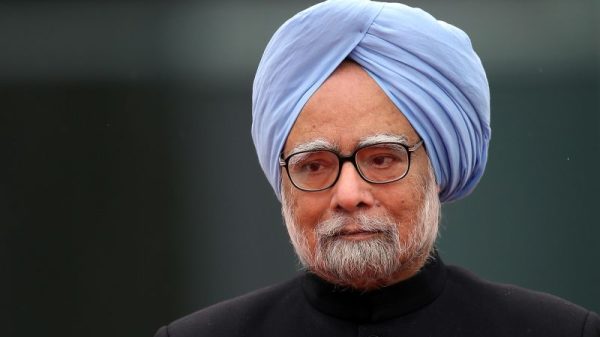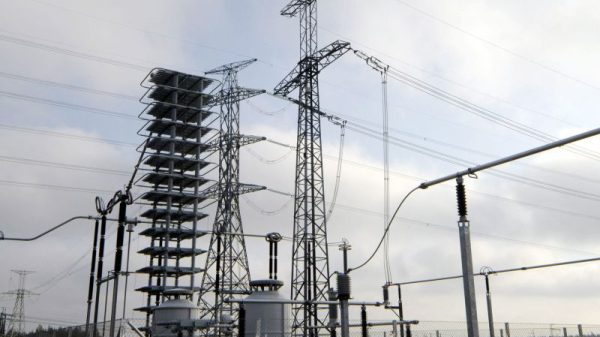Record-breaking levels of thick, toxic smog that have shrouded eastern Pakistan and northern India since last month can be seen in striking satellite imagery.
A huge cloud of gray smog blankets Pakistan’s Punjab province and stretches out east into India, over the capital New Delhi and beyond, satellite imagery from NASA Worldview shows.
The pollution has forced authorities in Pakistan to close schools and public spaces as the acrid smog threatens the health of tens of millions of people.
Images from the Pakistani cities of Lahore and Multan this weekend show the dark haze engulfing streets and blocking buildings from view.
Pollution in the region ramps up each winter, when an ominous yellow haze blankets the skies due to a combination of farmers burning agricultural waste, coal-fired power plants, traffic and windless days. Air quality worsens in the winter because colder and drier air traps pollution, rather than lifting it away, as warm air does when it rises.
Though major South Asian cities suffer with poisonous smog each year, officials in Pakistan’s second biggest city Lahore have characterized this season as unprecedented.
The air quality index in parts of Punjab, Pakistan’s most populous province of 127 million people, has exceeded 1,000 multiple times in the past week, according to IQAir, which tracks global air quality. A reading above 300 is considered hazardous to health.
In the Punjab city of Multan on Monday, the reading for the tiniest and most dangerous pollutant, PM2.5, was more than 110 times higher than safe levels set by the World Health Organization
When inhaled, PM2.5 travels deep into lung tissue where it can enter the bloodstream. It comes from sources like the combustion of fossil fuels, dust storms and wildfires, and has been linked to asthma, heart and lung disease, cancer, and other respiratory illnesses, as well as cognitive impairment in children.
Hospitals and clinics in Pakistan have become inundated with patients suffering from the effects of pollution, with Punjab health officials saying more than 30,000 people have been treated for respiratory ailments in smog-hit districts, according to the Associated Press.
Pakistan’s Environmental Protection Agency said Sunday there was “an unprecedented rise in the number of patients with lung and respiratory diseases, allergies, eye and throat irritation” in the districts of Faisalabad, Multan and Gujranwala, where average air quality levels were “alarmingly hazardous.”
Schools and government offices had already been ordered to close until November 17, including in the provincial capital Lahore. On Friday, Punjab authorities shuttered all parks, playgrounds, museums, zoos and historical sites in 18 districts for 10 days.
New restrictions on Monday extended the ban to all outdoor activities including outdoor sports events, exhibitions, festivals, and outdoor dining at restaurants, in four districts including Lahore. Markets, shops and malls are to close by 8 p.m. local time, with exceptions for pharmacies, gas stations and essential food and medical stores, according to the EPA.
The fresh restrictions are designed to keep people at home and avoid unnecessary travel that could put their health at risk, Sajid Bashir, EPA spokesperson told AP.
Of particular concern are children who are among the most vulnerable because their bodies, organs and immune systems are still not fully developed.
Khuram Gondal, Save the Children Pakistan’s country director said as well as disrupting their education, “air pollution and hotter temperatures are leading to life-threatening dangers for children, including difficulty breathing and higher risk of infectious diseases.”
He urged the government to “urgently address air pollution” and find long-term solutions to the annual problem.
Last week, officials in Punjab drafted a letter to the Indian government to open a dialogue on the issue.
Millions of people die each year from air pollution-related health issues. Air pollution from fossil fuels is killing 5.1 million people worldwide every year, according to a study published in the BMJ in November, 2023. Meanwhile, WHO says 6.7 million people die annually from the combined effects of ambient and household air pollution.
The climate crisis will only make pollution worse as extreme heat becomes more severe and frequent, scientists say. Climate change is altering weather patterns, leading to changes in wind and rainfall, which also affect the dispersion of pollutants.
A report published earlier this year found that the world consumed record amounts of oil, coal and gas last year, pushing planet-heating carbon pollution to a new high.







































